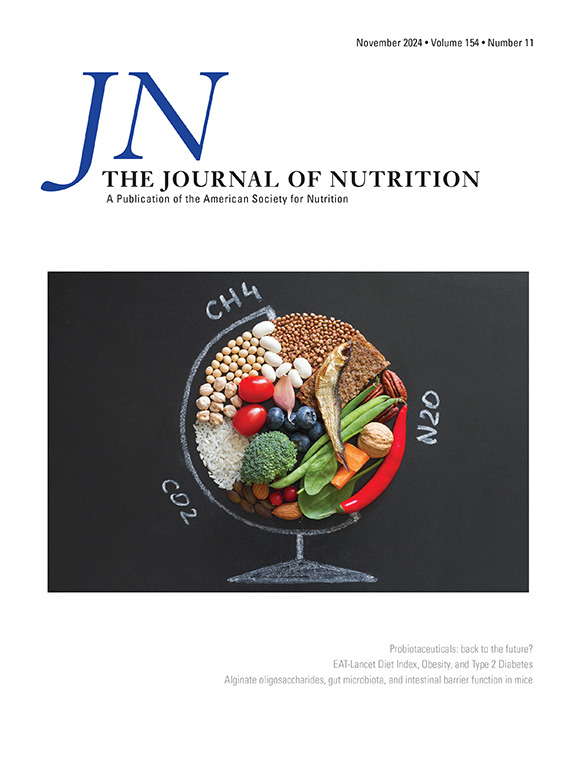Early Consumption of Stevia rebaudiana Bertoni on Rat Females: Actions on Their Fertility, Progeny, and Behavior
IF 3.7
3区 医学
Q2 NUTRITION & DIETETICS
引用次数: 0
Abstract
Background
The growing interest in healthy diets has led to increased consumption of natural products such as stevia. Pregnant females, who often consume high amounts of non-caloric sweeteners, are particularly vulnerable. Given the limited health guidelines on stevia, evaluating its effects on this population and their offspring is essential.
Objectives
This study assessed the impact of early, continuous exposure to an aqueous extract of Stevia rebaudiana Bertoni (Asteraceae) on female rat reproductive health, anxiety, sexual behavior, and progeny outcomes.
Methods
Female Sprague-Dawley rats (PND21) were assigned to a control group (CON, water) or a stevia group (STE). In experiment 1, estrous cycles were monitored via vaginal smears (CON, n = 6/assay; STE, n = 14/assay). Anxiety-like behavior was assessed using the elevated plus maze test, and sexual behavior was evaluated through the partner preference test (CON, n = 4/assay; STE, n = 4/assay). Pregnancy rate, duration, litter size, sex ratio, and offspring survival were also assessed. In experiment 2, stevia administration began 5, 10, 15, or 50 d before mating, and the same reproductive parameters were evaluated. Statistical analyses were performed using a Student’s t-test, repeated measures analysis of variance (RM-ANOVA), and one-way analysis of variance (ANOVA) with Fisher’s Protected Least Significant Difference post-hoc test.
Results
The STE group exhibited disrupted estrous cycles, reduced pregnancy rates, and smaller litters (with notably fewer males). Body weight was significantly lower in the STE group during the third week of pregnancy. There were no significant differences in food or beverage intake. Behaviorally, the STE group showed decreased sexual partner preference, lower anxiety, and increased risk assessment behavior. Prolonged premating exposure to stevia was associated with extended pregnancy duration, smaller litters, and higher pup weights at PND1.
Conclusions
Stevia disrupted fertility, reducing pregnancy rates, litter size, and male offspring, while extending gestation. Prolonged exposure worsened these effects, highlighting stevia’s impact on reproduction and prenatal development. These findings underscore the need for improved health guidelines for vulnerable populations.
雌性大鼠早期食用甜菊糖:对其生育能力、后代和行为的影响。
背景:对健康饮食日益增长的兴趣导致了甜菊糖等天然产品的消费增加。经常食用大量无热量甜味剂的孕妇尤其容易受到影响。鉴于有关甜菊糖的健康指南有限,评估其对这一人群及其后代的影响至关重要。目的:本研究评估了早期持续暴露于甜菊糖水提取物(菊科)对雌性大鼠生殖健康、焦虑、性行为和后代结局的影响。方法:将雌性Sprague-Dawley大鼠(PND21)分为对照组(CON, water)和甜叶菊组(STE)。在实验1中,通过阴道涂片监测发情周期(CON, n=6/assay;STE, n = 14 /试验)。焦虑样行为采用升高+迷宫测试评估,性行为通过伴侣偏好测试评估(CON, n=4/assay;STE, n = 4 /试验)。妊娠率,持续时间,产仔数,性别比例和后代存活率也进行了评估。在实验2中,在交配前5、10、15或50天开始给糖,并评估相同的生殖参数。采用学生t检验、rm -方差分析和Fisher PLSD事后检验的单因素方差分析进行统计分析。结果:STE组表现出发情周期中断、怀孕率降低、产仔减少(雄性明显减少)。妊娠第三周,STE组的体重明显降低。在食物或饮料摄入量方面没有显著差异。行为上,STE组表现出较低的性伴侣偏好、较低的焦虑和较高的风险评估行为。长时间的交配前暴露于甜菊糖与PND1妊娠期延长、产仔数减少和幼崽体重增加有关。结论:甜菊糖破坏了生育能力,降低了妊娠率、产仔数和雄性后代,同时延长了妊娠期。长时间接触甜菊糖会加重这些影响,突出甜菊糖对生殖和产前发育的影响。这些发现强调需要改进针对弱势群体的健康指南。
本文章由计算机程序翻译,如有差异,请以英文原文为准。
求助全文
约1分钟内获得全文
求助全文
来源期刊

Journal of Nutrition
医学-营养学
CiteScore
7.60
自引率
4.80%
发文量
260
审稿时长
39 days
期刊介绍:
The Journal of Nutrition (JN/J Nutr) publishes peer-reviewed original research papers covering all aspects of experimental nutrition in humans and other animal species; special articles such as reviews and biographies of prominent nutrition scientists; and issues, opinions, and commentaries on controversial issues in nutrition. Supplements are frequently published to provide extended discussion of topics of special interest.
 求助内容:
求助内容: 应助结果提醒方式:
应助结果提醒方式:


